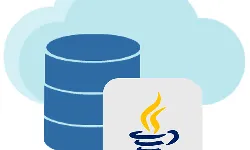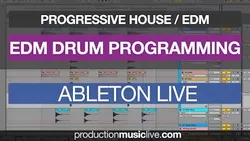
Prepared Statements and Stored Procedures 
This course will teach you how to use PreparedStatements and Stored Procedures to improve the performance and security of your Java Database Connectivity (JDBC) applications. Learn how to use PreparedStatements to increase efficiency and security, and how to use Stored Procedures to encapsulate complex SQL and PLSQL logic. Discover how to query database meta data and cope with different SQL syntax for different JDBC compliant databases. ▼
ADVERTISEMENT
Course Feature
![]() Cost:
Cost:
Free
![]() Provider:
Provider:
Coursera
![]() Certificate:
Certificate:
Paid Certification
![]() Language:
Language:
English
![]() Start Date:
Start Date:
22nd May, 2023
Course Overview
❗The content presented here is sourced directly from Coursera platform. For comprehensive course details, including enrollment information, simply click on the 'Go to class' link on our website.
Updated in [June 30th, 2023]
This course provides an overview of Prepared Statements and Stored Procedures in Java Database Connectivity (JDBC). It builds on the core principles and techniques from the JDBC 1 course, and focuses on the advantages of using PreparedStatements over JDBC Statements. It also introduces the concept of using Stored Procedures on the database server to encapsulate complex SQL and PLSQL logic. Additionally, the course covers how to query the database meta data, such as table structures, and how to handle different SQL syntax for different JDBC-compliant databases using the JDBC escape syntax.
[Applications]
After completing this course, students should be able to apply the concepts of PreparedStatements and Stored Procedures to their own projects. They should be able to create PreparedStatements and Stored Procedures to encapsulate complex SQL and PLSQL logic. Additionally, they should be able to query the database meta data and use the JDBC escape syntax to cope with different SQL syntax for different Jdbc complaint databases.
[Career Paths]
[Career Path]Database Administrator
[Description]A Database Administrator (DBA) is responsible for the performance, integrity, and security of a database. They will often be responsible for the development and maintenance of database systems, as well as the implementation of new technologies to improve the performance of the database. DBAs must have a strong understanding of database structures, theories, principles, and practices. They must also be able to troubleshoot and resolve any issues that arise with the database.
[Development Trend]The development trend for Database Administrators is to become more specialized in specific database technologies. As the demand for data increases, DBAs must be able to quickly and accurately analyze and manage large amounts of data. Additionally, DBAs must be able to work with a variety of different databases, such as Oracle, SQL Server, and MySQL. As the demand for data increases, DBAs must also be able to work with cloud-based databases, such as Amazon Web Services and Microsoft Azure. Additionally, DBAs must be able to work with Big Data technologies, such as Hadoop and Spark.
[Education Paths]
The recommended educational path for learners is to pursue a Bachelor's degree in Computer Science or a related field. This degree will provide learners with a comprehensive understanding of computer science fundamentals, including programming languages, software engineering, computer architecture, operating systems, and database systems. Learners will also gain an understanding of the development trends in computer science, such as artificial intelligence, machine learning, and cloud computing.
In addition to the core computer science courses, learners should also take courses in database systems, such as database design, database administration, and database programming. These courses will provide learners with the skills and knowledge necessary to understand and use PreparedStatements and Stored Procedures. Learners should also take courses in web development, mobile development, and software engineering to gain a comprehensive understanding of the development process.
The development trend in computer science is rapidly changing, and learners should stay up to date with the latest technologies and trends. This includes learning new programming languages, frameworks, and technologies, as well as understanding the implications of artificial intelligence and machine learning. Additionally, learners should stay informed about the latest developments in database systems, such as NoSQL databases, distributed databases, and cloud databases.
Pros & Cons

Intermediate to advanced level content.

Walks you through Java and embedded SQL statements.

Teaches how to call functions from Java through JDBC.

Requires prior knowledge and understanding.

Setting up the practice environment is time-consuming.

Lack of organization and effective teaching.

Insufficient coverage of stored procedures.

Outdated instructions and setup for labs.

Not practical or applicable in real-world scenarios.
Course Provider

Provider Coursera's Stats at AZClass
Discussion and Reviews
0.0 (Based on 0 reviews)
Explore Similar Online Courses

Ableton Drum Beat Programming Tutorials

Become a Java Developer

RDBMS PostgreSQL

Intro To PostgreSQL Databases With PgAdmin For Beginners

PostgreSQL: Client Applications

Mastering SQL using Postgresql

Database Design and Basic SQL in PostgreSQL

PostgreSQL: Advanced Queries

Spatial SQL with Postgres : A language for geographers

Learn SQL Using PostgreSQL: From Zero to Hero

PostgreSQL Essential Training


Start your review of Prepared Statements and Stored Procedures